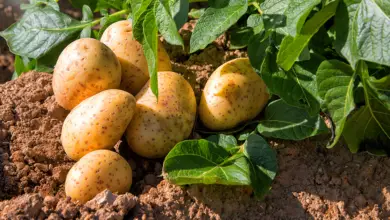How To Propagate Swiss Cheese Plant: Step-By-Step Guide

If you’re new to gardening, growing more Swiss Cheese Plants, or Monstera Deliciosa, can be a fun project. There are different ways to help these attractive plants grow in your space.
Although Swiss Cheese Plants can be tricky to find, they’re not hard to grow more of once you know what to do. This guide will teach you step by step how to use each method, tell you what tools and stuff you need, and explain how to do each step well to grow more Monstera Deliciosa. If you can’t wait to see more of these plants in your spot, let’s jump into how to grow them!
Table of Contents
- What You’ll Need to Start Growing More Plants
- How to Grow More Swiss Cheese Plants Step by Step
- Step 1: Get a stem from a Swiss Cheese Plant
- Step 2: Take off some lower leaves
- Step 3: Use rooting hormone
- Step 4: Plant the stem in a pot
- Step 5: Set the right moisture level
- Step 6: Find the warmest, most humid place
- Step 7: Wait for the roots to grow
- Step 8: Move to a bigger pot or outdoors
- Tips for Giving Your Plant the Best Start
- How to Solve Common Issues When Growing a New Swiss Cheese Plant
- Can you grow Swiss cheese plant from cuttings?
- Where do you cut a Swiss cheese plant to propagate?
- Do Swiss cheese plants root in water?
- How long does it take to propagate Swiss cheese plant?
- Wrapping Up
What You’ll Need to Start Growing More Plants
- Clean, sharp scissors or shears for cutting
- A product to help roots grow, like hormone powder or gel
- A pot with holes on the bottom
- Soil or a mix that drains well
- A spray bottle or clear plastic bag (to create a small, moist space like a greenhouse)
- A spot that’s warm and moist, like near a sunny window or in a greenhouse
- A watering can or bottle to spray water, keeping the soil just right—not too wet or dry
How to Grow More Swiss Cheese Plants Step by Step
Step 1: Get a stem from a Swiss Cheese Plant
Start by taking a stem from a plant. Make sure your scissors or shears are clean and sharp to avoid harming the plant. Choose a stem with at least one spot where leaves come out (leaf node) and make sure it’s healthy and not broken.
For the best chances of growing roots, cut the stem at a slant just below a leaf node, which gives more space for roots to appear. This cutting should be done when the plant is growing well, like in the spring or summer.
Step 2: Take off some lower leaves
Now take off the lower leaves carefully. This stops them from rotting when put in the soil, which could make the plant sick. You can twist them off or use scissors.
Just remember to keep a couple of leaves at the top because they’re needed for photosynthesis. This is how the plant gets energy to grow.
Step 3: Use rooting hormone
Next, dip the cut part of your stem into a hormone that helps roots grow. You can buy this as a powder or gel at a garden store or online. Make sure to cover the whole cut area with it. This step can help roots start faster and grow better.
Step 4: Plant the stem in a pot
Time to put the stem in a pot with soil.
Pick a pot that lets water run out so the soil doesn’t get too wet. Fill it with soil that drains well.
Put the stem in carefully, making sure it’s as deep as it was growing before. Press the soil down lightly near the stem.
Keep the soil around the stem damp, but not soggy, to give it a good start.
Step 5: Set the right moisture level
After you plant your stem, the soil needs to stay a bit moist. Don’t make it too wet, though. You can use a spray bottle to mist it when needed. Or you can cover the pot with a clear plastic bag to keep the moisture in, like a small greenhouse. Just remember to open the bag sometimes for fresh air.
Step 6: Find the warmest, most humid place
For the stem to grow roots well, find a place that’s warm and sunny, like a spot by a sunny window or in a greenhouse. The best temperature is between 20-27 degrees Celsius (68-80 degrees Fahrenheit), and the moisture in the air should be 60-70%.
By having the right warmth and humidity, you give your new plant what it needs to grow strong roots.
Step 7: Wait for the roots to grow
Now you need to be patient. It can take a few weeks to months for roots to start growing. Once they do, your plant will begin growing more and will be ready to move to a bigger pot or go outdoors.
Giving your growing plant the right care and conditions is key for it to do well and make healthy roots.
Step 8: Move to a bigger pot or outdoors
When the roots are ready, it’s time to move the new plant. Be gentle—roots are fragile. Put the plant into a bigger pot or outside, planting it at the depth it was before. Press the soil firmly around the stem so it stands up straight.
Right after you move it, keep the plant watered well. For the first few weeks, this helps it settle into its new place.
Tips for Giving Your Plant the Best Start
Growing a Swiss Cheese Plant can be very exciting, especially if you take these steps and use these tips:
- Pick stems that look good and are growing right now. Stay away from ones that look sick or hurt.
- Always use a tool that’s sharp and clean to cut the stem. This helps stop germs from getting into the plant.
- Remove the lower leaves from the stem carefully, so you don’t hurt it.
- Cut a piece of stem just below where the leaves grow out to keep it from getting rotten and to help it succeed.
- Put the freshly cut end of the stem into a powder that helps roots grow faster to raise the likelihood of success.
- Plant the stem into soil that drains well or into a special mix made for growing new plants. Make sure to keep the soil damp but not too wet or too dry.
- Put the pot in a warm spot (68-80°F or 20-27°C) and provide the right level of humidity (between 60% and 70%).
- Be patient while waiting for roots to start growing, which might take from a few weeks to a couple of months, depending on your setup.
- When you see roots, move the young plant to a bigger pot or to your garden. Be gentle because the roots are fragile.
- Water the plant a lot for the first few weeks after you move it to help it settle in its new home.
- Keep an eye on the plant for bugs or diseases and deal with them as soon as you see them.
How to Solve Common Issues When Growing a New Swiss Cheese Plant
If you’re trying to grow a new Swiss Cheese Plant and you’re having some trouble, here are the problems you might face and how to fix them:
- Stem Rotting – If your stem gets squishy and brown, it’s probably because the soil is too wet or there’s too much humidity. To make it better, use soil that lets water through easily and try to lower the humidity by taking off plastic bags or covers that are around the pot.
- No Roots Forming – If the stem isn’t sprouting roots, it might be because the air is too dry or the powder that helps roots grow wasn’t used right. To make it better, keep the soil damp and use the root-boosting powder correctly.
- New Plant Not Growing – If your young plant isn’t getting bigger, it might not like where it’s living or it might not have enough light. Make it happier by placing it somewhere with lots of light but not directly in the sun’s rays. Check to make sure it’s warm and humid enough where you’ve put it.
- Pests or Diseases – To stop bugs and diseases, always use clean tools when you’re cutting or touching the stems. Watch your plant carefully for any signs of trouble so you can fix it quickly.
- Yellow Leaves – If the leaves turn yellow, this could mean the air is too dry or the plant isn’t getting enough light. Make sure the soil stays damp and put the plant where it can get plenty of light without being in direct sunlight.
Can you grow Swiss cheese plant from cuttings?
Where do you cut a Swiss cheese plant to propagate?
Do Swiss cheese plants root in water?
How long does it take to propagate Swiss cheese plant?
Wrapping Up
Getting a new Swiss Cheese Plant from a cutting is a fun way to get more beautiful plants. If you provide the right mix of warmth, humidity, and patience, you can successfully start a new plant from a cutting.
Remember to keep the soil just wet enough and put the new plant where it will get a good amount of light, but not direct sunlight. Also, always use clean equipment and check on your plant to make sure no pests or diseases are bothering it.







